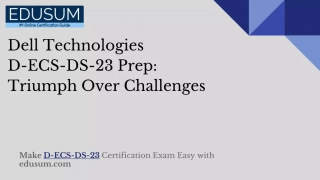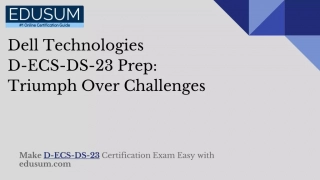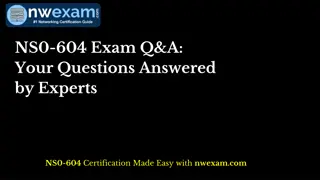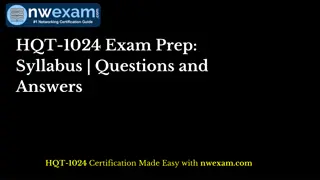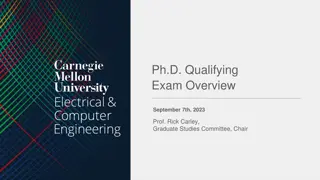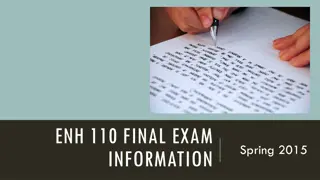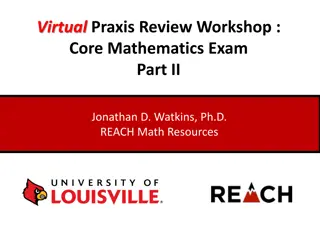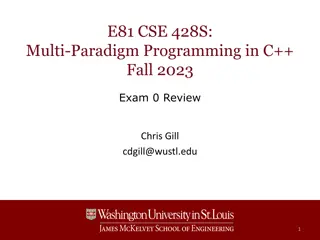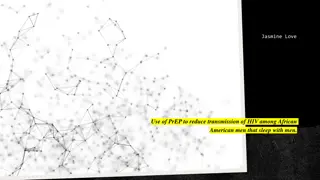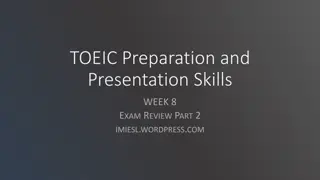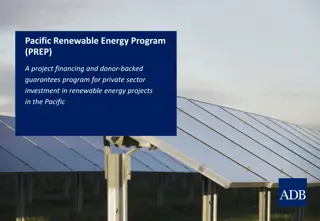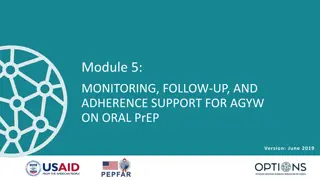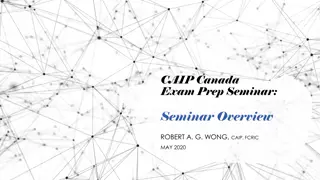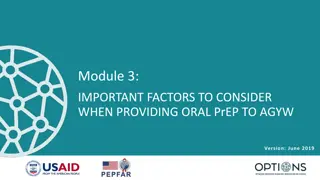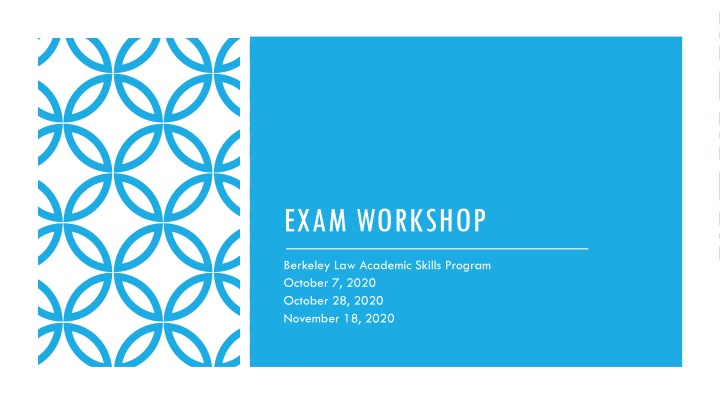
Effective Law School Exam Strategies and Tips for Success
Discover key strategies and tips for excelling in law school exams, including focusing on what you can control, prioritizing legal analysis skills, and handling different types of exam questions like issue-spotters and multiple-choice questions. Learn how to identify legal issues, apply relevant rules, and perform effective legal analysis to ace your exams.
Download Presentation

Please find below an Image/Link to download the presentation.
The content on the website is provided AS IS for your information and personal use only. It may not be sold, licensed, or shared on other websites without obtaining consent from the author. If you encounter any issues during the download, it is possible that the publisher has removed the file from their server.
You are allowed to download the files provided on this website for personal or commercial use, subject to the condition that they are used lawfully. All files are the property of their respective owners.
The content on the website is provided AS IS for your information and personal use only. It may not be sold, licensed, or shared on other websites without obtaining consent from the author.
E N D
Presentation Transcript
EXAM WORKSHOP Berkeley Law Academic Skills Program October 7, 2020 October 28, 2020 November 18, 2020
STRESSED ABOUT EXAMS?
MOTIVATION/FOCUS IN DIFFICULT TIMES Healthy and safety come first Your loved ones come first Self-care comes first Focus on long-term goals Feed your soul
Focus on the things you can control (how much work you put into your classes), not the thing you cannot control (grades) You came to law school to learn how to be a lawyer, not to get good grades GROWTH MINDSET; LONG- TERM GOALS Focus on learning the skill of legal analysis Practice is the best way to improve, and you get more out of it when you put more into it Remind yourself why you are here -- what do you hope to do with your law degree?
TYPES OF LAW SCHOOL EXAM QUESTIONS ISSUE-SPOTTER ( ESSAY ) QUESTIONS MULTIPLE-CHOICE QUESTIONS POLICY QUESTIONS
ISSUE-SPOTTER QUESTIONS What skills are tested? 1. Identify legal issues 2. Identify the rules relevant to resolving legal issues 3. Perform legal analysis apply the law to the facts
Identify all of the legal issues But demonstrate an understanding of which legal issues (or sub-issues) are difficult and which are easy 1. IDENTIFY THE LEGAL ISSUES Spend more time/space on the difficult issues (where the facts cut both ways) and far less time on the easy issues (where the conclusion is obvious) Triage
State the rule(s) and sub-rules relevant to resolving the legal issues 2. IDENTIFY THE RELEVANT RULES Use IRAC structure with mini-IRACs for sub-rules Use terms of art; avoid paraphrasing
Apply Apply the rule(s) to the facts Identify the facts that are relevant to resolving the legal issue Identify 3. PERFORM LEGAL ANALYSIS Discuss Discuss the relevant facts in detail Explain why the facts matter and why they point to one conclusion or the other ( So what? ) Spend more time on difficult issues and less time on easy issues Explain Compare Analogize to and distinguish relevant cases
Read the fact pattern once all the way through without taking notes Read the fact patter again and note the issues, underline key facts, etc. Read the question or prompt first DEVELOP A PROCESS FOR ISSUE-SPOTTER QUESTIONS Outline your answer with headings for each issue and sub- issue Use the IRAC structure to analyze each issue (use mini- IRACs for sub-issues) Organize the issues chronologically Goal = clear and concise writing. Short paragraphs and short sentences. Use policy considerations as a tie-breaker
IRAC VS. CREAC IRAC (exams) CREAC (memos or briefs) Issue Conclusion Rule Rule Explanation Application Application Conclusion Conclusion
STRUCTURE: IRAC WITH MINI-IRACS Issue Rule: If X and Y, then rule is met. Sub-Issue X Rule Application Conclusion Sub-Issue Y Rule Application Conclusion Overall Conclusion
CAUTION: DONT JUST LIST THE ARGUMENTS Plaintiff will argue X, Y, Z. Defendant will argue A, B, C. What s missing? The analysis! Take an objective perspective: consider all of the facts on both sides and then determine how a court would decide the issue. Use case comparisons to guide your thinking.
SHOW YOUR WORK Don t skip any steps Don t jump to conclusions Discuss all of the issues and sub-issues (e.g., elements), regardless of your conclusion on prior issues Discuss relevant defenses even if you conclude the plaintiff s claim likely fails
MULTIPLE-CHOICE QUESTIONS Less common on take-home exams Typically mini issue-spotter questions For mini issue-spotter/fact application questions, do IRAC on scratch paper and then look for the conclusion in the answer For other types of questions, read all of the answer choices, eliminate wrong answers, and then select the best remaining answer Answer every question, even if you must guess (after eliminating wrong answers) Read slowly and carefully
POLICY QUESTIONS Short essay format Asks you evaluate rules rather than apply them Both descriptive and normative arguments Typical questions: A quote that takes a position agree or disagree Discuss Proposed new rule Implications of a doctrinal shift
HOW TO PREPARE FOR POLICY QUESTIONS Pay close attention in class and take notes on policy discussions In your outline, consider the policy considerations underlying every rule What is the reason for or purpose of the rule? Is the rule effective? FIEP Fairness, Incentives, Efficacy, Process Focus on the policy considerations discussed in class
GENERAL POLICY CONSIDERATIONS: FIEP FAIRNESS INCENTIVES & EFFICACY PROCESS
FAIRNESS, INCENTIVES, EFFICACY, PROCESS Fairness Does this make the victim whole? Is there fair notice? Does this feel fair? Is this fair to the defendant? Is it proportional? Whom does this rule advantage/disadvantage and how? Disproportionate impact on a particular group? Incentives & Efficacy Does the rule effectively carry out the intended purpose? What behavior would this rule deter? What behavior does this rule incentivize? Could this have perverse incentives? How would this impact insurance? Process Is this judicially efficient? Is the jury equipped to resolve this issue? Would this dramatically increase the number of claims? What sorts of resources would need to be expended? Has the rule been fairly applied in practice?
SAMPLE ANSWER STRUCTURE 1 2 3 Discuss/evaluate the old/current rule or the author s position (use FIEP) Discuss/evalaute the new rule or a contrasting position (use FIEP) Take a position and explain the reasons for your position (use FIEP)
PREPARING FOR EXAMS Schedule time for reviewing and outlining Schedule time to take practice exams and do hypos Create a schedule for the exam period Consider taking the exams that you are most worried about first Consider taking the exam that you are least worried about last, when you are tired Work backwards from your exam schedule to create a study schedule Communicate with family members and housemates about your exam schedule
No magic, not Mt. Everest Review your class notes and pull out the important stuff what will help you on the exam? Include policy considerations Don t get lost in too many resources Use another student s outline as a template to get you started, but ultimately create your own outline An outline is a very personal tool; its value lies solely in how helpful and useful it is to you OUTLINING
WHEN IN DOUBT, PRACTICE! Practice and testing are highly effective learning methods. Passively reviewing/reading information is not. Practice way more than you think! If you are wondering whether you should review your notes or do a hypo, do the hypo. First work through practice questions slowly to help you learn the material and develop a systematic approach. Later do timed practices to simulate the pressure/adrenaline. Compare your answer to a friend s or a sample answer look for IRAC structure and a detailed analysis of the facts. Or schedule a meeting with Senior ASP Fellow Haley Johnson.
TAKE CARE OF YOURSELF GET LOTS OF SLEEP MAKE TIME FOR MOVEMENT CONNECT AND COMMUNICATE WITH LOVED ONES VISIT NATURE
Take a few deep breaths Acknowledge how you are feeling DAILY MINDFULNESS Connect with that emotion without judgment name your feelings and welcome them Extend compassion to yourself and others
Prepare for open-book exams as if they were closed- book Create a checklist of issues to make sure you don t miss or forget anything Stay within the time limits for each question. If time limits are not provided, allocate time for each question. TAKING OPEN- BOOK EXAMS Develop a system for how to approach different types of exam questions and practice your system Make sure you know your professor s policy on cutting-and-pasting or retyping directly from an outline Do not copy/paste or retype directly from any source other than materials you created yourself
RESOURCES Where can you find hypos and practice exam questions? Academic Skills Program website Where can you find more tips and advice? Academic Skills Program website Who can help? Academic Skills Program, Student Services, Berkeley Law Staff Psychologists, Tang Center

